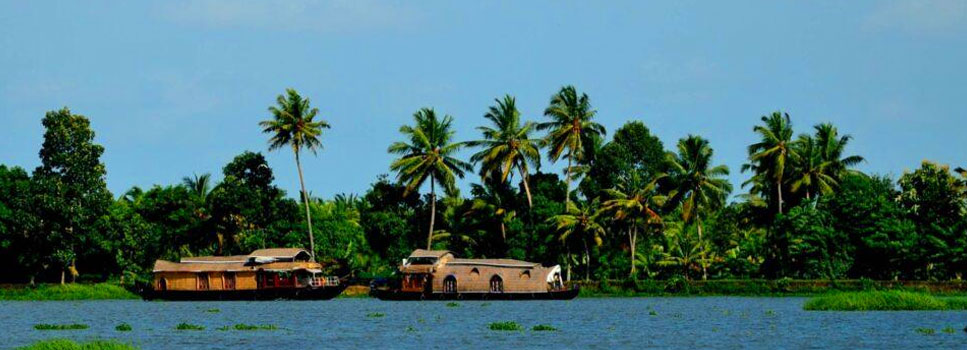Embracing the Varied Charms of Kerala's Climate
By Tushar [03/Jan/23] Nestled along the southwestern coast of India, Kerala is a land of diverse landscapes and rich cultural tapestry. The state's climate is as varied and enchanting as its lush greenery and backwaters. Understanding Kerala's seasons, temperatures, and weather patterns is essential for anyone planning to explore this tropical paradise.

1. Monsoon Magic (June to September): Kerala's climate is heavily influenced by the Southwest Monsoon, which brings abundant rainfall to the region from June to September. During the monsoon season, the state transforms into a vibrant green haven, with rainforests coming to life and rivers flowing with renewed vigor. The temperatures range from 24 to 30 degrees Celsius, providing a cool and refreshing atmosphere. While heavy rainfall can be expected, the monsoon also brings a unique charm to Kerala, making it an ideal time for Ayurvedic treatments and enjoying the lush landscapes.
2. Cool Winters (November to February): Kerala experiences a pleasant winter season from November to February. The temperatures during this period range from 18 to 32 degrees Celsius, offering a respite from the heat of the previous months. Winter is considered the peak tourist season in Kerala, attracting travelers with its comfortable weather and clear skies. It's an excellent time for exploring the hill stations like Munnar, where the air is crisp, and the tea plantations are shrouded in a light mist.
3. Hot and Humid Summers (March to May): Kerala tour in summer, from March to May, is characterized by warm and humid weather. Temperatures can soar to 35 degrees Celsius or higher in some regions. While coastal areas may experience higher humidity, the hill stations provide a cooler escape. The summer season is perfect for beach enthusiasts, with destinations like Kovalam and Varkala offering inviting shores and refreshing sea breezes. It's advisable to stay hydrated and plan activities during the cooler parts of the day.
4. Tropical Cyclones (June to November): AKerala is susceptible to tropical cyclones, primarily during the pre-monsoon and post-monsoon seasons. These cyclones can bring heavy rainfall and strong winds, impacting the coastal areas. Authorities and meteorological agencies closely monitor these weather patterns, providing timely warnings and ensuring the safety of residents and tourists. Travelers planning a visit during these months should stay updated on weather forecasts and be prepared for possible disruptions.
5. Unique Microclimates: Kerala's diverse geography contributes to microclimates, with variations in temperature and weather patterns across different regions. The Western Ghats, for example, experience cooler temperatures and higher rainfall, making them ideal for biodiversity and lush landscapes. Coastal areas, on the other hand, may have milder temperature fluctuations but higher humidity levels. Exploring the varied microclimates allows visitors to witness the rich biodiversity and landscapes that Kerala has to offer.
In Conclusion:
Kerala's climate is a harmonious blend of diverse seasons, each offering a unique experience to travelers. Whether you seek the rejuvenating embrace of the monsoon, the cool tranquility of winter, or the vibrant energy of summer, Kerala has something to offer year-round. Understanding the nuances of the climate adds an extra layer of appreciation for this enchanting destination, ensuring that every visit to Kerala is a memorable and immersive experience.
Kerala Tour Packages:
- Amazing Kerala Budget Tour
- Best Magical Kerala Tour
- Exotic Kerala Tour
- Offbeat Kerala Family Package
- Kerala Hills Backwater Beaches
- Through the Hills and Backwaters
- Beaches and Backwaters of Kerala
- Enchanting Hill Stations Tour
- Relaxing Beach Vacation
- Beach Excursion of Kerala
- Kerala Tamilnadu Tour
- Tamilnadu tour with kerala
- Kerala and tamilnadu package
- Karnataka and Tamil Nadu